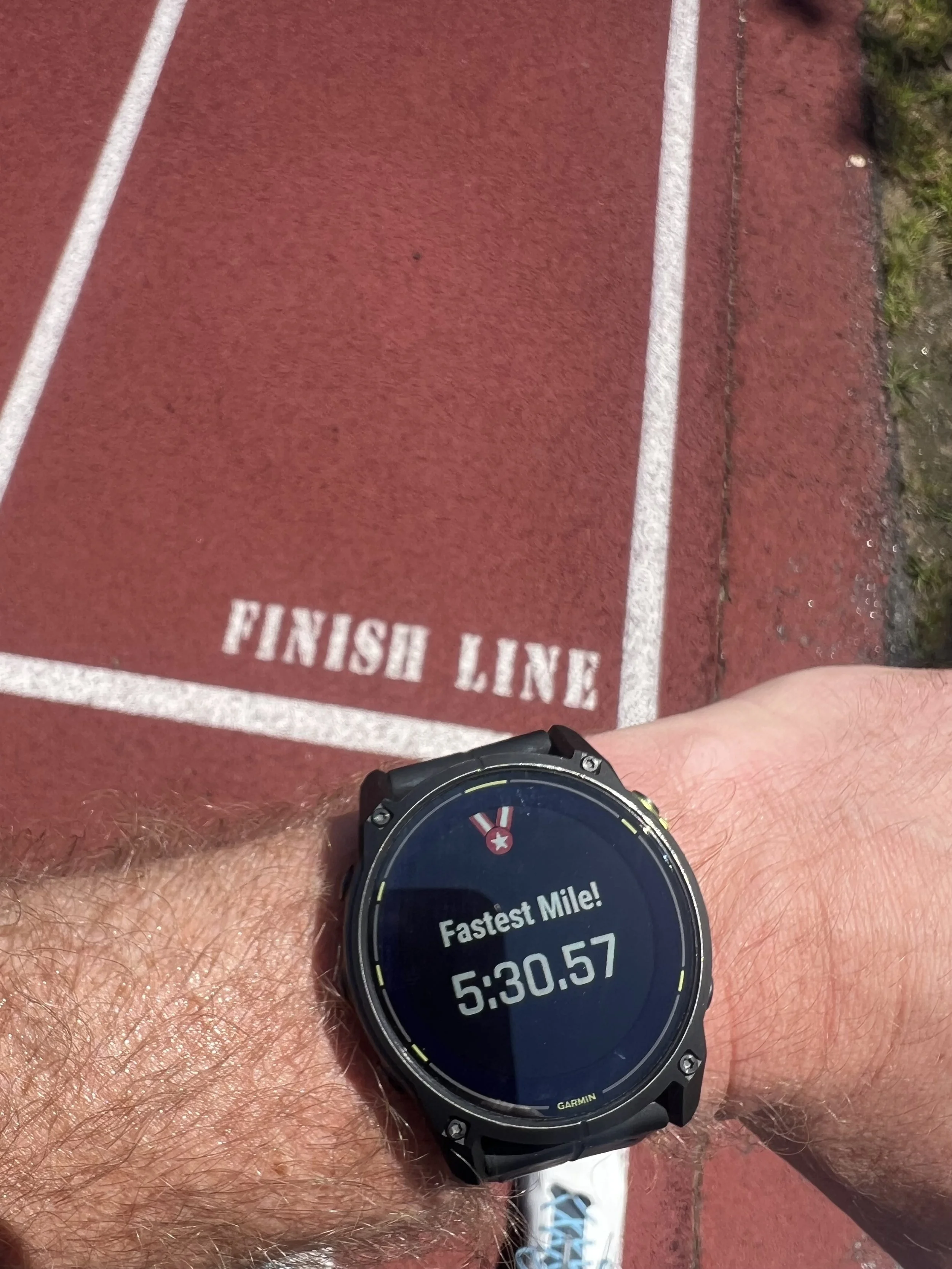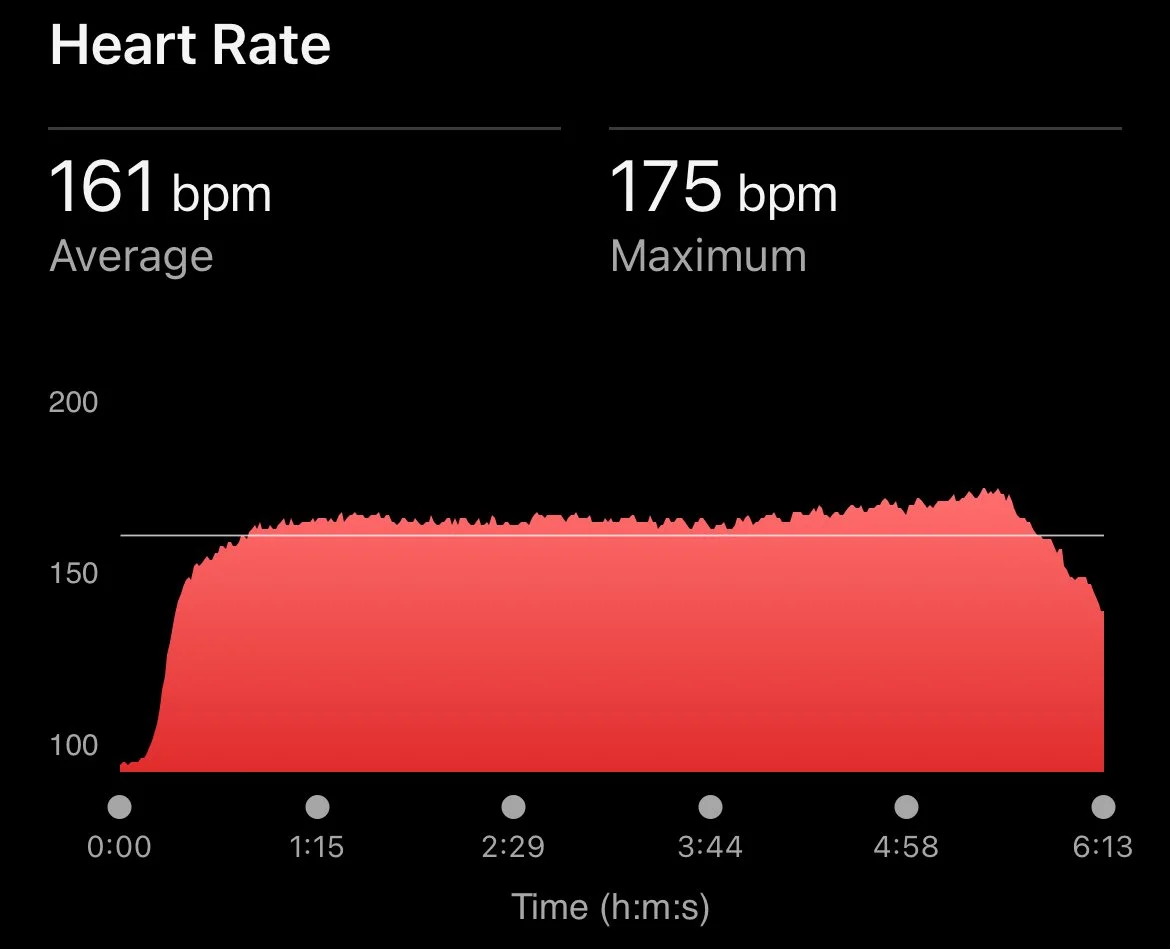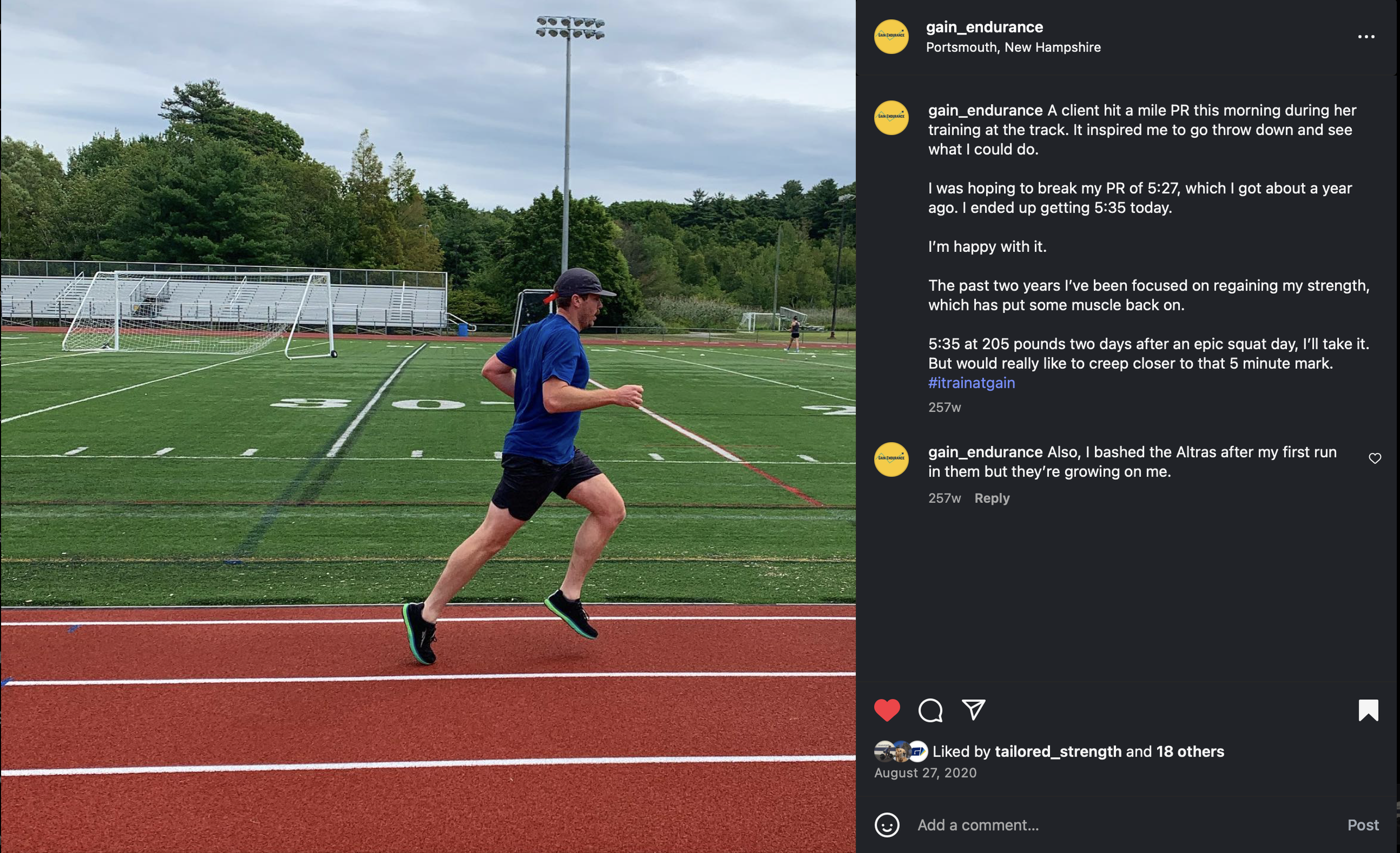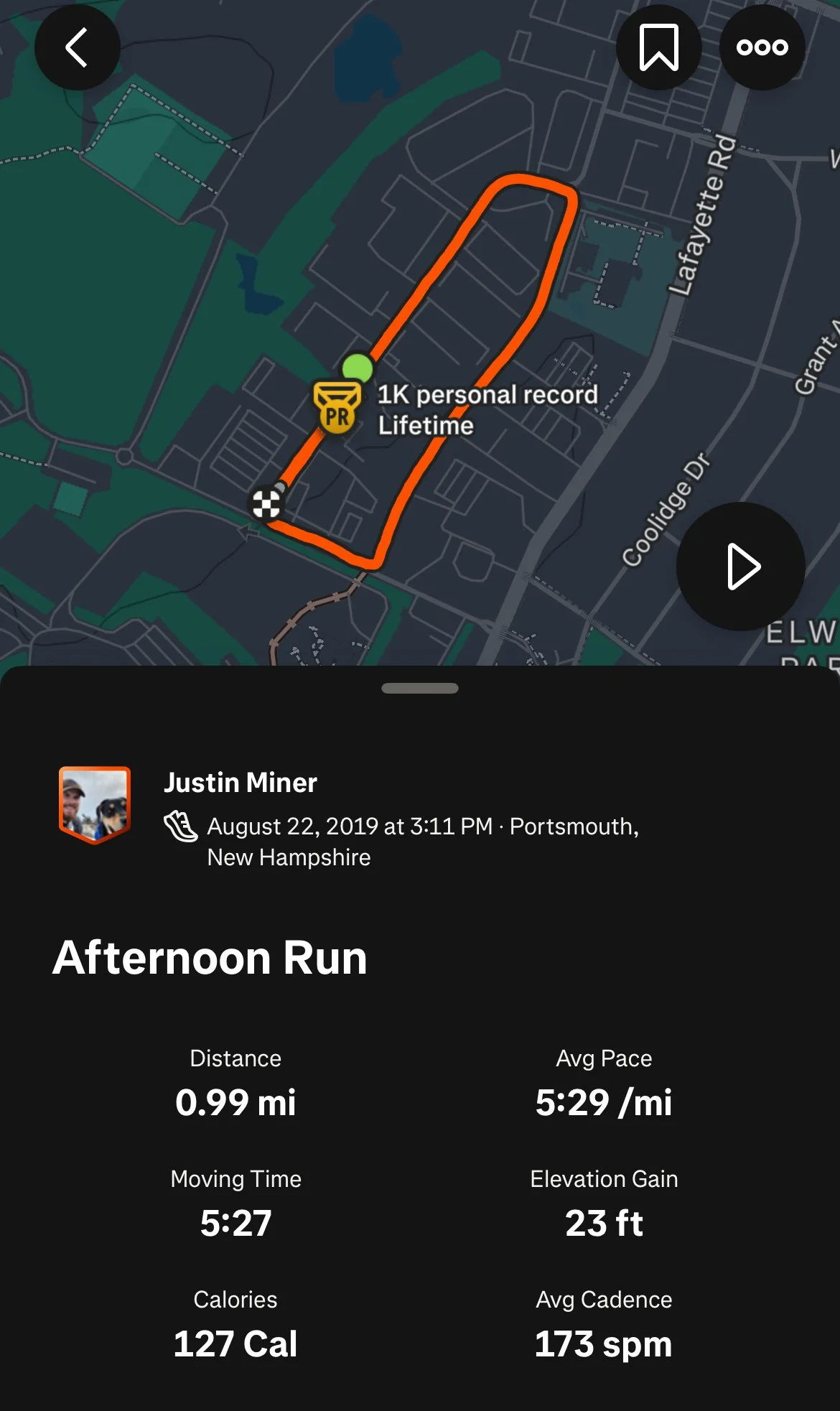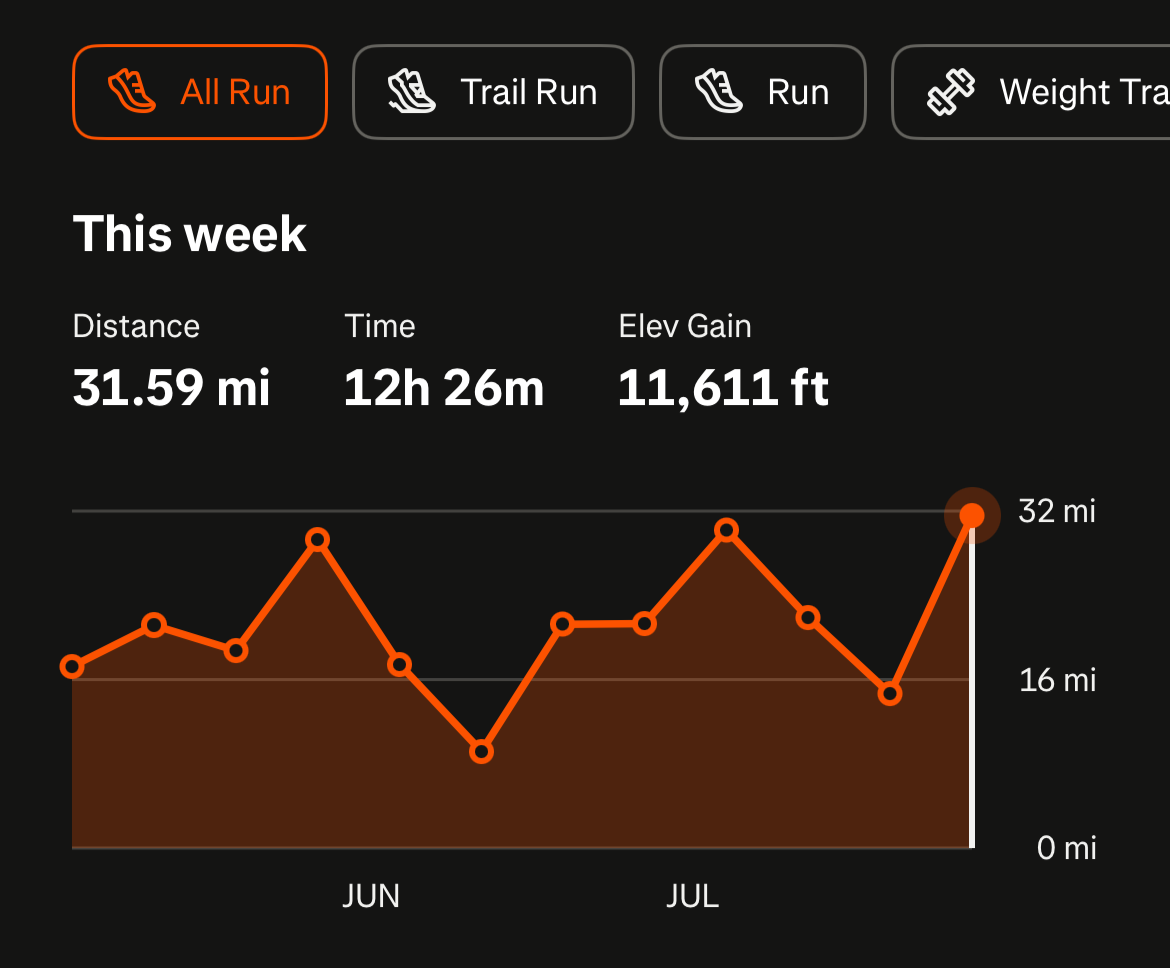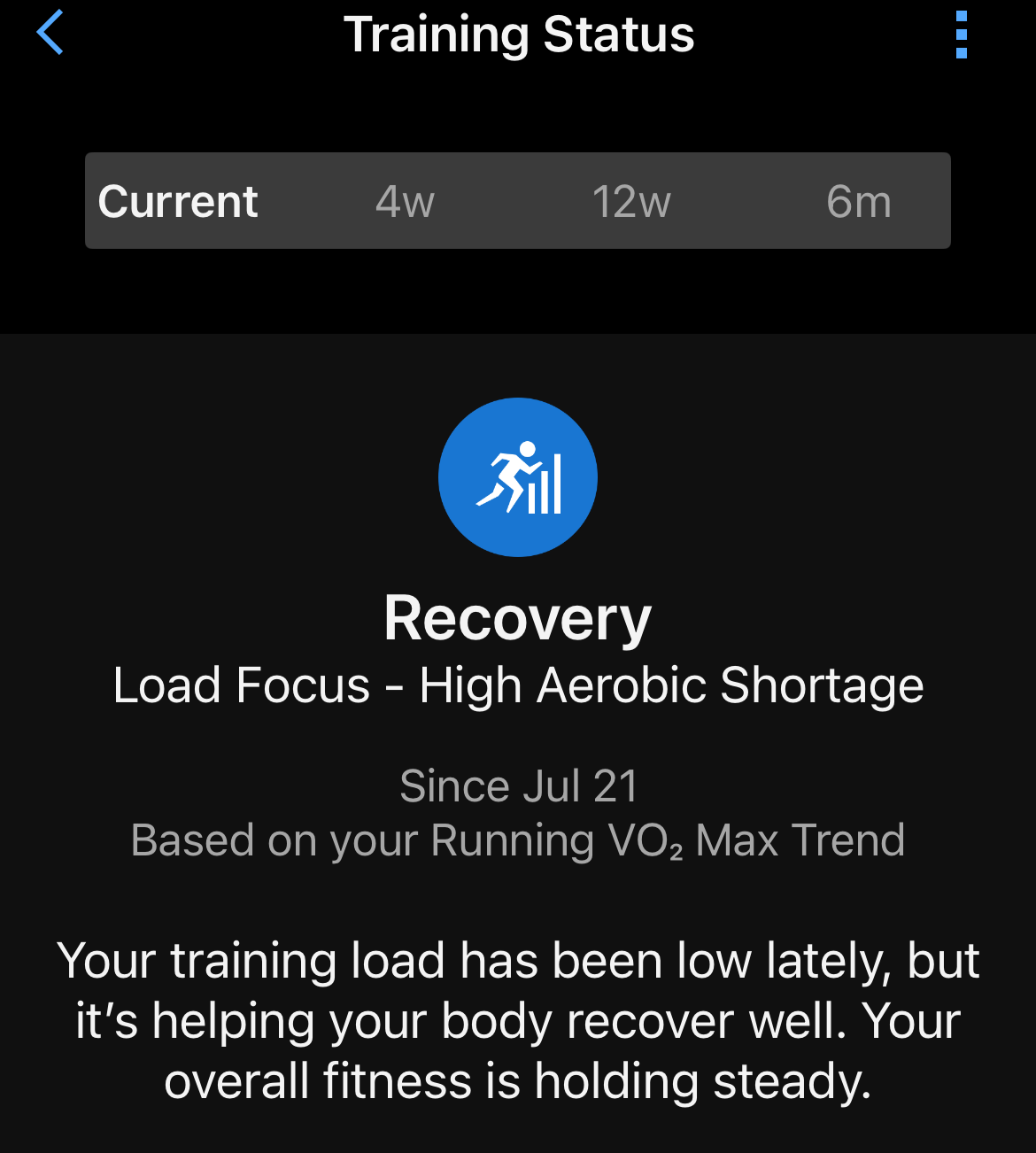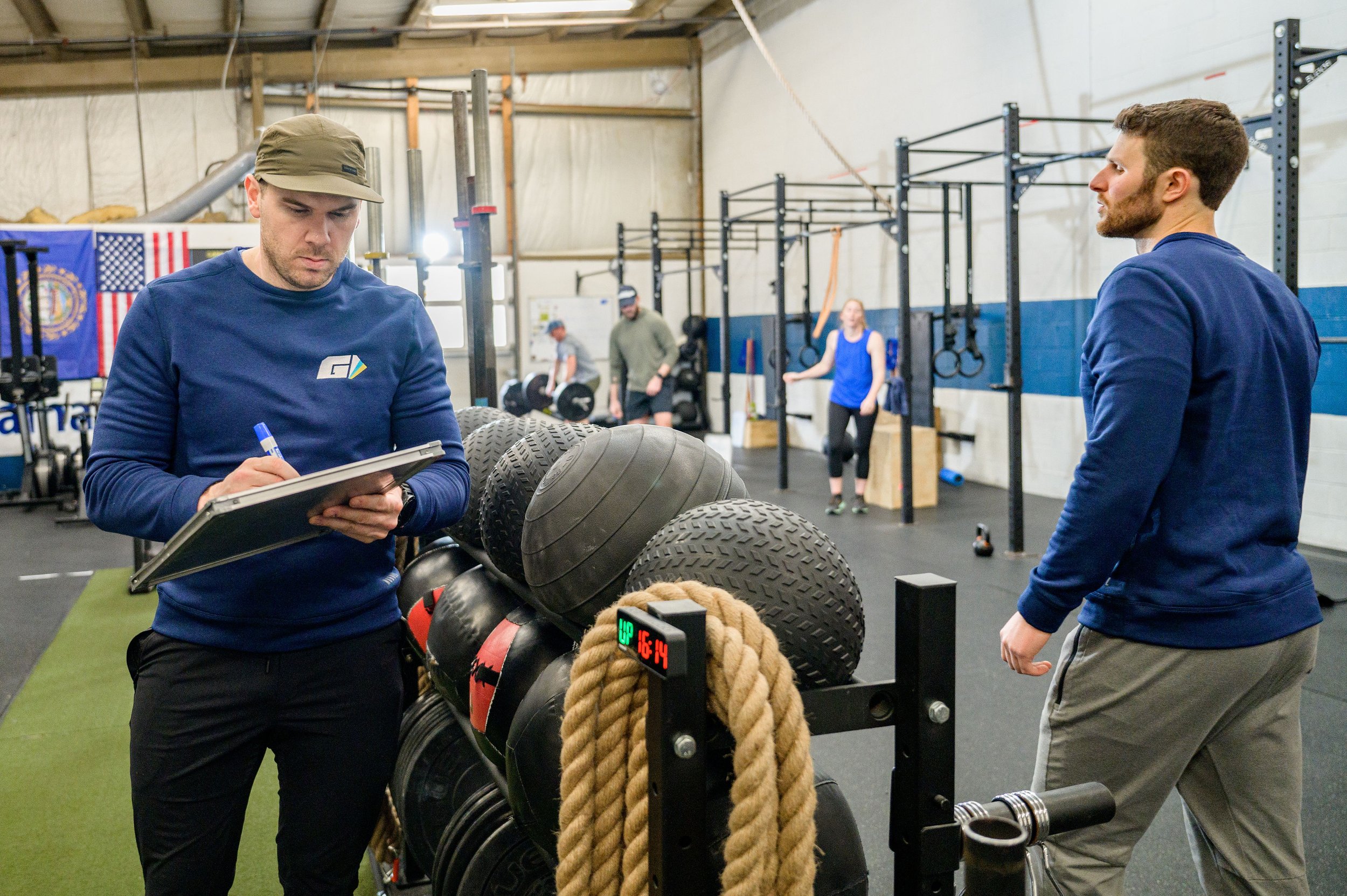
Welcome to the GAIN Blog
The blog is updated Monday-Friday. Tune in for posts and discussion about health, fitness, nutrition, training experiments and reflection. We share articles, videos and more. We post the link to our Instagram story every day, make sure to follow along there to never miss a post.
Friday Thoughts 91
Welcome to this week’s edition of Friday Thoughts! Let’s get into it.
Fast Mile
The Fast Mile Summer times are rolling in and we got faster! Most of us shaved around 20 seconds from our 6 minute baseline test—nice work everyone!
See Core Value #1
STyle
We’ll be replacing our florescent bulbs with chandeliers next week, and the sculptors will be here at the end of the month.
Greysteel Strength & Conditioning
A few people, including a physician friend of mine, sent me this article. It’s really cool. In 2018 outside of Detroit, a physician opened a strength training gym for people in their 50s, 60s, 70s and 80s. He prescribes barbell lifts as a way to stay healthy and fight off the negative effects of aging like like or strength, power, mobility endurance and balance. It’s pretty awesome.
That’s it for the week. Be nice to Riley 6am and 7:30am crews. See you next time!
—Justin Miner
foot Pressure
Some of my favorite coaching cues aren’t really cues at all—they’re more like universal movement principles. One of the most powerful? Foot pressure.
Whether you're deadlifting, squatting, lunging, Olympic lifting, jumping, rowing, or skiing—this idea holds up: Keep your weight centered on your midfoot.
You want your foot pressure balanced—not so far back on your heels that your toes lift, and not so far forward that your heels come off the ground. Right in the middle. The sweet spot.
When you're in that balanced position, you’re able to call in all your strength. It sets you up to use your full potential and keeps your body aligned from the ground up. Your feet won’t lie.
So today, whether you’re squatting, deadlifting, or even bench pressing, take a second to check in with your feet. Find that sweet spot. You’ll be surprised how much it cleans up your movement.
—Justin Miner
Fast Mile REFLECTIONS
Eight weeks ago, on June 21, we started the Fast Mile Summer with one goal in mind; run a fast mile. The marathon gets all the attention. I wanted to plant my flag in the ground and say: a fast mile is more impressive than a slow marathon, and one that everyone can relate to. My goal was to get a PR in mile. I hadn’t run a fast mile on the track since 2020, when I ran a 5:35. There’s some controversy around what I thought my PR was, more on that later.
Last week the time had come to take the test. Coming from vacation my legs were tired, but improved throughout the week. On Thursday, I did a make-up workout from the week before, 400m with 1 min rest. I was able to run these fast and smooth and it was a confidence builder. My schedule opened on Friday afternoon and I wanted to take advantage of the cooler weather and nice breeze.
I ran a mile easy interspersed with drills and stretching, followed by some 100m strides working up to race pace. I felt good so I walked a lap, took a swig of water and was off. I knew pacing on the track was going to be tricky. Despite my lack of skill, it would still produce the fastest time. I knew my splits for a 5:20-2:25 mile. My strategy was to run fast and look down at my watch as little as possible—this was a mistake.
I came around the first lap, took a quick peek and saw something different what it ended up being. On the second lap, I looked down and was about where I thought I was supposed to be for halfway. Two hundred meters later I was in the pain cave. Coming into the corner I was surprised at how hard it was to breathe. I glanced down and my pace was WAY too slow. I put my head down for the next lap and a half knowing I screwed it up, that sub 5:30 probably wasn’t in the cards today.
My mile—1609 meters measured by GPS, not just four laps—was 5:30.57
After the fact, I really wish I had lapped every 400m to get my split times and see how the effort went. Did it really all fall apart on that third lap? I exported my GPX file into ChatGPT and it was able to pull my splits from the file. I ran my first lap way too fast, about 4 seconds faster than target pace. Combine that with slowing down by 4 seconds on the third lap and I went 5:20-5:30 just like that.
Note how my cadence slowed on the third lap.
Heart rate run for fun (strapped up)
I was hoping to be a little faster, solidly in the 5:20s, or honestly, maybe even faster than that. After a couple days reflection however, I’m pleased with my effort, the result, and mostly with how the training plan went. I’m 36, and didn’t pull a hamstring trying to run at near maximum effort. I didn’t tweak anything, overdue it, get too sore, and anything like that, and that’s actually the biggest win.
In years past when I’ve opened up like that for a mile, my hamstrings would be very sore, or my calves. This time, I was drained! I laid in the grass for a good 20 minutes before recuperating. It was all a little bittersweet though, because I really wanted to PR, and I might have gotten one anyway.
My last mile was documented here, and in it I cite that I ran a faster mile the summer prior (2019). I’ve always taken that for face value because it seemed like I was a reliable source. After Friday’s fast mile, Strava and Garmin both claimed that was my fastest mile ever. Upon further investigation, the 2018 mile registered as .99, and I did it on West Road, not the track.
So was that really my PR? You know the rules, if it doesn’t happen on Strava, did it happen at all?
—Justin Miner
July By the numbers
Welcome to this month’s edition of By The Numbers—where I look back at the data my watch collects, spot trends, and make adjustments. I’ve been doing this for nearly two years now, and it’s become a helpful monthly reality check. Let’s dive in.
Steps
Total: 465,141
Daily Average: 15,004
That’s about an increase of 1,000 steps per day from June—not surprising, and I expect this number to fall back down in August. Interestingly, it’s 30,000 more steps than last July, which is surprising. I was running every day in July 2024 and thought my volume then was impossibly high.
Sleep
Average Nightly Sleep: 6 hours 56 minutes
Average Sleep Score: 77
While I beat my step count from last year, I didn’t beat my sleep. July 2024 was the last time I averaged over 8 hours per night. Sleep quality has been similar, though I had a couple of rough nights with low scores.
My bedtime has been trending a little later, but I’ve been making up for it by sleeping in. This works most of the time—unless I go to bed late and wake up early, which is more often my problem than simply going to bed late.
Compared to last month, my average sleep time was only about five minutes less, but my average sleep score dropped by six points. Here’s hoping for more restful nights in August and an average score back in the 80s.
Workouts
Total: 30
7 strength sessions
23 runs: 105 miles, 30 hours, 21,365 ft vertical gain
In July, I raced the Loon Mountain Race, completed the Fast Mile Summer Program twice a week, and packed in as many trail runs with big vertical gain as I could to prepare for this year’s MMD 50k (coming up this Saturday).
It was a big vertical month—about double my usual gain, with roughly 10 more training hours than normal. This came from vacationing in the Whites, where I managed a 2-hour hike/run most days (and one much longer). The jump in gain from being in the mountains is huge—especially considering I already make an effort to run hills and hit the local mountain frequently. It just goes to show: you’ve got to train on terrain similar to your race/event.
Thanks for reading. As always, I encourage you to look back at any data you’ve collected from the past month and do a check-in.
How are your steps?
How’s your sleep?
Did you work out enough?
The information is there—take a look!
—Justin Miner
MOnday check in
I keep hearing how summer is almost over, but didn’t we just start the month of August? We’re still right smack in the prime time of summer, so don’t you dare get the Sunday Scaries for the rest of the month.
We’ve got a big week ahead. This is test week for people on the Fast Mile Summer Program. Be sure to chat with me before you take off on your test. I learned a lot from my effort on Friday, and am kind of thinking of giving it another go with a better strategy other than to just run hard. I thought I was being more calculated than I was. More on that tomorrow.
50k in Whites is this weekend. This year’s course is mostly new trails or ones I’ve only been on once before. Looking forward to it and hoping that my legs will tolerate a long day out in the mountains.
Yesterday was my wedding anniversary, today is the anniversary of our first date. It was after the Ironman Fitness Pull Up Contest in 2012. I got 18 reps.
The blue and white hockey photo on the upper right is me
Friday Thoughts 90
Welcome to this week’s edition of Friday Thoughts! Happy August.
Fast Mile
Yesterday I made up the workout I missed last week on the Fast Mile Program. It was the 400m repeats with 1 minute rest. I was able to hit my targets and it was tough but not impossible. It was a nice confidence boost which I needed. I went to the track and it started raining hard, so I headed to the gym and did them on the treadmill—it was okay. I wanted practice taking laps on the track, but you can’t control the weather. I’m not shy of running in the rain either, but it was raining hard!
Recovery
I needed a confidence boost cause my dogs were barking this week—as I expected. To build from a post earlier this week, Silly Smart Watch, I expected to have a tough week of training on tired legs, despite spending the previous week “recovering,” according to my Garmin.
Contrast
As an athlete I take pride in not having a specialty, or a hole I fall into, and the next week will put this to the test. I wanted to spend the summer working on my mile, but I had this 50k looming over me that I do every August. It’s not just a 50k, either. It has 11k of vertical gain and is on rugged and unforgiving terrain.
So the question was: can I spend the summer running the fast mile program, while also getting prepared for a really long day out in the mountains?
Of course I’ll be relying on the aerobic base I spend the last decade building. It will be interesting to see how this plays out. I’m feeling really fit, but a little apprehensive since I never got a good long run in. Anyway, training experiments like this give me experience and I’m excited to see how it plays out.
CrossFit Games
Speaking of training experiments that break the “rules,” the CrossFit Games are this weekend. I love watching the CrossFit Games. These athletes are incredible—they’re really strong, really fast, they have great endurance and skill. At the end of the weekend they’ll crown the Fittest on Earth. The Games were the first thing to show me that the physiology textbooks aren’t immutable— you actually can get strong, and build endurance at the same time! For so long we thought these traits were incompatible—you had to choose one or the other. That simply isn’t the case, and inspired me to try things like gearing up for a mountainous 50k with a bunch of track workouts. I love the idea of specializing in no specialty. Tune in and check out some impressive fitness.
August challenge
The challenge of the month is a burner!
For time:
20/15 cal SkiErg
10 Dock Climbs
20/15 cal SkiErg
*Dock Climb: starting with feet on the ground, climb, jump, or roll up the loading dock and stand tall - that’s 1 rep.
We used our loading dock and the garage door in a challenge workout a couple summer ago and I’m excited to bring it back. This workout will be short and spicy!
Have a good one, see you next time.
—Justin Miner
Fast Mile Week 7 check in
We’re in week 7 of the Fast Mile Summer Project, and I think we can all feel it — nearly two months of fast running is starting to add up. The legs are a little heavier, the recovery a little slower, and that extra burst of speed might not feel quite as snappy.
That’s normal. This is the point in a training block where the work catches up to you. The trick is to manage the fatigue so you can still recovery.
This Week’s Game Plan
If you’re feeling a little beat up, it’s okay to skip one of the weekly workouts to stay fresh. If you do skip, make it the first workout of the week, not the second one. The second workout is the one we want to keep—it’s more directly geared toward your mile effort.
On the flip side, if you’re feeling good and you want to stick to the plan, go for it!
Some of you might be itching to test your mile sooner rather than later, and that’s perfectly fine too. At this point, if the motivation strikes, you’ve got to take advantage and go for it.
My Plan
I’m headed to the track later this morning for my workout. If it goes well, and I’m feeling good afterwards, I might go for my mile this weekend or early next week—I have a big run planned next weekend, and so I want to get it done before that.
Listen to your body, make smart adjustments, and let’s keep inching toward that fast mile.
— Justin Miner
Beginner Strength Training checklist
Here are my go-to strength training movements for beginners.
These simple, foundational exercises are easy to learn, give coaches valuable insight into movement patterns, and lay the groundwork for a long-term strength and conditioning program.
1. Box Squat
Teaches how to use your hips, control the descent, and maintain a strong torso position. The box makes it easier to spot—and feel—any funky movement patterns.
2. Push-Up / Elevated Push-Up
A great way to build stable shoulders and dial in pressing mechanics. Elevating the hands makes it accessible for almost everyone while still delivering a solid horizontal pressing stimulus.
3. Ring Row
The pulling counterpart to the push-up. Simple, feels good, and easy to correct sagging hips or poor shoulder positioning.
4. Split Squat
A stationary lunge that gets your knee behind your hip—crucial for healthy hips—and builds single-leg strength, stability, and balance.
5. Kettlebell Deadlift
Teaches control of the spine and emphasizes using your hips rather than your lower back.
6. Anti-Rotation Press
Deceptively challenging. Builds core stability by training you to resist unwanted movement.
When in doubt, pick one of these—or a variation—and you’ll cover the major movement patterns needed for a well-rounded workout.
—Justin Miner
@justinminergain
Silly Smart Watch
Yesterday on the blog I mentioned I didn’t hit my running goals for the week, like getting in a long run or both of the Fast Mile Sumer Workouts.
I didn’t mean to convey that I had a bad week of training. It was still a productive week—despite what my Garmin is saying. This is a look into why you can’t always trust your smart watch; it can’t see some things that a good old fashioned training log can.
Here’s a look at the week of training. Note on the chart that it’s the highest mileage week shown on the chart. It happens to be my highest mileage week of the year. A couple other weeks are close, and those are both races. Sunapee Scramble and the Loon Mountain Race. While those weeks had the same mileage, about 30, they were both about 6 hours of running with 4000 feet of elevation gain.
Last week’s 30 mile week was 11,600 feet over 12 hours.
So why does my Garmin say my training load is down and that I’m recovering?
The main factor here is the terrain. I was hiking up a lot of really steep stuff and tip-toeing my way down. I wasn’t going nearly as fast in comparison to my track workouts—even when bombing downhills. Due to this, Garmin says: you’e going a lot slower than you have been. Your training load is reduced and you’e recovering.
This, combined with the fact that I’m good at pacing and not letting my heart rate get too high meant I didn’t even come near my high heart rates from speed workouts on the track or tough interval sessions on the AirRunner. Another factor for Garmin—your heart rate is staying too low on these workouts, they’re not too stressful, therefore you must be recovering.
It took me double the time to cover the same distance over the course of these weeks—6 hours for 30 miles vs 12 hours for 30 miles.
As I mentioned, the vertical gain and rugged terrain is getting overlooked here. So, the easy math, is yes, I had a down week of training for running a fast mile. But it doesn’t say that I had a really productive week of climbing up mountains getting ready for a long run in the mountains in a couple weeks.
I love my watch and all the data it provides me. I like geeking out about it, and I’m currently worried for Hannah—her HRV is in the tank. Make sure you’re double checking your watch’s work though—and not taking everything for face value.
—Justin Miner
@justinminergain
Monday check in
Post-vacation Monday is here and I couldn’t be happier. Not that I didn’t enjoy our vacation, but I enjoy being at the gym and taking about working out and lifting things all day. Anyway, just like you should after a proper vacation—I’m excited to get back into it today, and to get back on my regularly scheduled program.
I had three fitness related goals for vacation:
Get Hannah up Mount Washington.
Both of the Fast Mile Summer workouts.
Long mountain run, 15-20 miles.
I checked off 1 out of 3 on my list, and it was the most important one, getting H up the Rock Pile. I was able to get the 800’s workout in on Sunday after we were back, and it felt really good to get the legs ripping after a week of mostly hiking ups and jogging down.
Next up on the calendar: I’m thinking about testing the fast mile this weekend, or early next week. Ideally, I want to squeeze it in before my 50k on August 9th.
Looking forward to catching up this week — see you soon!
—Justin Miner
@justinminergain
Friday Thoughts 89
Greetings from the White Mountains!
We’ve had great weather for our vacation.
It’s been a fun and relaxing week full of river trips, hikes, Storyland and just hanging out.
After 2 years of packing several kettlebells—to only not use them— I learned my lesson this year and only packed 1. It still didn’t get used. I also just realized I missed the Fast Mile workouts this week.
Other than that — it’s been a great time, and we got Hannah up on the Rock Pile, finally!
That’s it for today, see you back in the gym on Monday!
Justin MIner
@justinminergain
How to start
Potential members start with our 3-session trial. This serves as an opportunity to meet the coaches and see how we do things at GAIN. Our individualized, feels sort-of-like a group, but isn’t really a group, vibe is different, and unlike any other gym you’ve been to.
On your first visit you work closely with a coach doing our Intro Workout. This gives us an opportunity to go over some finer details like getting organized and breathing and seeing how much range of motion and stability your body has. We talk about injuries, training history and what you want to get out of your gym time.
Regardless of your fitness level and experience, we want you leaving the gym after that first session feeling as though you could have done more. Our saying is, we can write hard workouts, but need to prove that one day 1. We want you to build a new habit you can stick with, easing in is key. With our consistency over intensity mindset, many self identifying “not a gym person” has turned into a dedicated member who have been with us for nearly a decade.
You’ll learn a whole bunch of new movements and lingo, if you’re a newbie to the gym it can be a bit overwhelming. Just know that we’re aware of this, and try to take it slow and not overload you with gym jargon. On the first day we primarily focus on learning and breaking down the squat pattern, the push up and ring row and some of our core training drills.
By the second workout, we’re ready to introduce some more movements and will do some conditioning (cardio) and get introduced to some of our favorite cool-down mobility drills. This workout focuses on pressing and pulling with the upper body, along with some single leg movements.
On the last workout of the trial, you’re learning and working on the hinge pattern. This can be a tricky one, but is important for everyone to learn. We revisit some movements from the previous two workouts here if needed. This will feel like a bigger workout for most, because we usually give you more to do on the third day as your body is starting to adapt to some new movements.
All in all, the 3-Session Trial is a crash course in all things GAIN. Learn our favorite exercises, get your movement broken down by an experienced coach and learn how to move better, feel more connected and get a plan that’s tailored to what you need and want to accomplish.
Justin Miner
@justinminergain
My First Run
Reposted from April 2020…
Before opening GAIN, I hit a serious rough patch. I’d spent a year cautiously training—trying not to aggravate my back and hip—followed by a full year off from working out altogether. As a former athlete with no team, no goal, and chronic pain, I had nothing to train for. That mix of lost motivation and fear of making things worse kept me away from the gym entirely.
Running had always hurt. In college, we’d do captains’ practices down Hills Beach Road, and every single time, I’d strain a groin muscle. I’d be limping for a couple of days before it faded—just in time for the next running workout to set me back again.
Despite how much I hated it—how uncomfortable and boring it felt—I remember thinking: Someday I should run a marathon. It didn’t make sense, but I figured anything that difficult and miserable might be worth overcoming.
That thought disappeared for years.
Then one Saturday morning in the spring of 2014, something changed. I had recently started getting back in the gym. I was managing my injuries, spending real time stretching and foam rolling. For the first time in a long while, I wasn’t training to compete—I was training just to be human again. To move well. To stop hesitating out of fear.
That meant I had to learn to run without getting hurt.
So I dove in: I studied running mechanics, explored the Pose Method, and treated running as a skill—not a race. I didn’t like it, but I believed I should at least be capable of it.
That Saturday, Hannah and I left my apartment in Hampton with one goal: run 1.2 miles to the Secret Spot for breakfast burritos and iced coffee. Solid motivation.
The whole way there, I thought about how to lean and fall to create momentum, how to let my feet just kiss the pavement and lift them off quickly. By the time we arrived, my calves were seized up, my achilles were aching, and the bottoms of my feet were screaming.
We ate our burritos watching cars pass by on their way to the beach. We walked home. That became our summer routine. It was the first time I ever consistently ran—week after week, every Saturday.
In September, we ran down to the Secret Spot one morning and found it boarded up—closed for the season. And just like that, the ritual ended. I forgot about running again for a while.
It wasn’t until two years later, after we got Clementine, that I discovered trail running—and finally started to call myself a runner.
—Justin Miner
@justinminergain
Seventeen years to four plates
repost from January 2024…
2005
I back squatted for the first time at Great Bay Athletic Club. I’d been reading about squats in bodybuilding magazines I bought at the grocery store and finally decided to give it a try.
2006
As a high school senior, I hit 405 pounds on the back squat with a couple of training partners. The depth was questionable, and I’ve wanted to do it right ever since.
2007–2008
I kept squatting heavy—back or front squats—every week without fail. Never missed a training day.
2009–2011
In college, I goblet squatted and deadlifted a lot. There was only one squat rack in the gym, so we didn’t use it often.
2012–2014
My back hurt all the time. I kept getting injured. I started to believe back squats were dangerous, irresponsible, and a waste of time. I swore them off.
2015–2016
Maybe they weren’t dangerous… maybe I just moved poorly and had terrible mobility. I started from scratch—relearning how to squat and working hard on improving my range of motion.
2017–2019
I discovered ultrarunning and rarely lifted weights. Squatting wasn’t a priority.
2020
Time to get strong again. I followed a training cycle and built back up to a 305 squat—my first time over 300 in more than a decade.
2021
I wanted to build on that progress and trained hard in the fall. I hit 355 pain-free. That was a big deal.
2022
This was going to be the year I made a run at 405.
December 2022
I got hurt squatting. Then we had a baby. Training took a back seat.
March 2023
I started physical therapy, spent extra time on breathing, mobility, and warm-ups. I squatted light once a week through May, slowly rebuilding control and confidence. I hit 305 easily in May and went into running season feeling good about my back.
August 2023
After finishing a mountain ultra, I leaned into kettlebells. I trained consistently, got in a ton of high-quality reps, and enjoyed the simplicity of doing the same thing every day.
September 2023
A gym member inspired me to squat every day. I committed to a program—40 squat workouts in a row.
November 2023
I wrapped up the Easy Strength program feeling strong. I was tempted to go for 405 but reminded myself to be patient.
I hit a clean 355. A few weeks later, I tried 365 and it moved well. It looked so solid on video that I made the jump to 395—and got it.
December 2023
The plan was to do 3 singles at 315 with long pauses. The third one felt easiest of all, with a 4–5 second pause. I went up to 345. Easy.
Then 375. Still easy.
I loaded four plates: 405. And I got it.
Most importantly—nothing hurt.
I’m pumped. It’s been a 17-year journey of fighting with, and trying to master, the squat.
There are two points I want to make:
If you want to get better at something, you have to commit to it.
I’ve only run a handful of times since August. I had to put other parts of my fitness on hold to chase this. You can’t do everything at once.If there’s something you want to do—but don’t think you can—you might just need more time.
There were multiple times I thought I’d never back squat again. I didn’t need to give up. I needed more patience. More time. More reps.
—Justin Miner
@justinminergain
Justin Miner
@justinminergain
Squat fundamentals
We could all use more practice with the fundamentals. Check out these key teaching points we use at GAIN to help upgrade your squat mechanics:
Get Organized
Start from the ground up—literally.
“Screw” your feet into the floor by turning your heels slightly toward each other (imagine spinning your kneecaps away from each other). This creates external rotation at the hips and gives you a stable base before you even move.
Find Your Foot Pressure
After organizing your hips, you might feel pressure shift to the outside of your feet. That means you’ve overdone it.
Instead, aim to distribute your weight evenly—right in the middle of your heel and the ball of your foot. At the gym, we call this finding your midfoot. It takes some practice, but after a few reps, it’ll start to click.
Back then Down
Break the squat into two parts:
Push your hips back—like you’re reaching your butt to a wall behind you.
Then let your chest angle forward and bend your knees.
This sequence helps engage your hips properly and reduces stress on your lower back and knees. It might feel awkward at first, but it’ll soon become a fluid movement.
Stay Strong at the Bottom
Keep that midfoot pressure.
No collapsing knees—push them apart like magnets repelling each other.
As you stand up, drive through the middle of your foot, like you’re trying to break the floor beneath you.
If your heels pop up, you’re too far forward—lean back slightly.
If you’re tipping backward, get your toes down and re-center.
Finishing at the Top
As you rise, keep your knees pushed out.
At the top, squeeze your glutes to finish the rep, open up your hips, and set yourself up for the next one.
Breathing Basics
For bodyweight squats, keep it simple:
Inhale as you go down
Sharp exhale as you come up
Yes, there’s a time and place for breath holds and bracing—but for now, focus on rhythm and control.
I hope one of these cues makes something click for you. There’s always room to refine the fundamentals.
—Justin Miner
@justinminergain
Friday Thoughts 88
Greetings! Welcome to this week’s edition of Friday Thoughts. Let’s dive in.
Vacation
The Miner family is headed on vacation to the White Mountains next week for our annual summer trip. My goals are to climb the Rock Pile a freakish amount of times, double doses of ice cream, plopping rocks in the river, Storyland and building my—I mean Elliot’s—new Imperial TIE Fighter LEGO set…Don’t tell him yet, it’s a surprise!
Riley
While I’m away next week, long-time and well-known member, Riley, will be covering some coaching duties at GAIN. If you didn’t know, Riley has a fitness instructor background and is thrilled to be getting more involved. Make sure to tell Riley she’s awesome the next time you see her!
FAST MILE Summer
This was week 5 of the Fast Mile Summer Project. I skipped the first session since I’m coming off the race, and I did Day 2— 600m repeats— yesterday at the track. It was hot! I ran a little faster than target pace on the first one, and pushed a little harder each effort. I was aiming for 6 sets, but after the fourth, and my fastest of the day, I had enough. I skipped the last two and headed to the beach to jump in the ocean.
Have a great week!
—Justin Miner
@justinminergain
Choose your own adventure
I’m getting better at writing workout programs.
Not exactly shocking—I’m obsessed with this stuff.
I’ve written hundreds of programs over the years. In college I’d zone out during chemistry class, daydreaming about owning a gym and scribbling workouts for imaginary clients instead of paying attention to formulas (or whatever it is you’re actually supposed to learn in chem class). Since then, I’ve had plenty of practice.
But there’s one thing I always come back to—and I make sure to mention it in every initial consultation:
I can write a great 4-week program, but I’ll never be able to predict how you’re going to feel four Wednesdays from now.
Maybe you slept poorly. Maybe you crushed a presentation at work. Maybe you’re traveling, stressed, or had an extra cup of coffee. The reality is: how you feel day-to-day is unpredictable, and it’s unrealistic to expect every session to go exactly as planned.
That’s why over the years, I’ve built flexibility into my programming. The two tools that have been most effective?
Set ranges (i.e., 5-8 reps of db bench press)
“Pick one of the following” sections
Giving you options doesn’t make the program less structured—it makes it more responsive. It encourages you to pause and ask:
What do I need today?
How am I feeling?
What’s going to move me forward without crushing me?
It sounds simple, but most people don’t take time to reflect like that in the gym. The more you do, the more effective your training becomes.
As your training age increases, your program can become more of a “choose your own adventure.” The key is not to always pick the hardest or the easiest route—but the right one for that day.
—Justin Miner
@justinminergain
Slow and steady
The final climb of the Loon Mountain Race was tough! It was incredibly steep. I saw a lot of interesting strategies and techniques for getting up the mountain.
One runner of particular note would sprint 5 or 6 steps, and then collapse on all fours to take some big breaths. Once his breathing settled, he would do it again.
All I could think was: doesn’t this guy know that slow and steady wins the race?
It reminded me of people in the gym. The sprinting up the hill is the equivalent of starting at 5 sessions per week, along with a new diet and a 10k step goal. It’s too much, unsustainable but it sure does make you feel like you’re being productive.
I kept my pace, chugging nice and steady and eventually got around this guy. I passed a lot of other people on this section too, because I was keeping it steady. As we say in the gym all the time; consistency and moderation over intensity.
—Justin Miner
@justinminergain
medicine balls: heavier isn’t better
When you're lifting in the gym, we love to see weights go up. Heavier lifts usually mean you're getting stronger—and that's progress we can measure.
But when it comes to medicine ball exercises, more weight isn’t always better. Here’s why:
With movements like goblet squats, deadlifts, and bench presses, the goal is to build strength—your ability to produce force. The more strength you have, the more force you can create. Simple.
But with medicine balls, we’re not just building strength—we’re building power.
Power is how quickly you can apply force. It’s not just about being strong—it’s about being fast and strong. That’s why med ball work like slams, side tosses, and chest passes need to be done explosively. Speed matters.
Using a ball that’s too heavy can mess with your mechanics, slow you down, and actually reduce the power you're able to produce.
So while a 20-pound ball might look impressive, if it makes you move like you’re stuck in mud, it’s not doing the job.
10 crisp, snappy slams with an 8-pound ball > 10 sluggish slams with a 20-pounder.
Heavy is better for strength. Fast is better for power. Keep that in mind the next time you reach for a med ball.
—Justin Miner
@justinminergain
MOnday Check in
Here we are again, happy Monday!
I had a great time at the Loon Mountain Race yesterday. It was as fun and as challenging as advertised. I was able to get up the mountain under my goal time of 90 minutes. I’m really enjoying the shorter distance mountain runs where you can push the pace.
The plan is to go with the flow for training this week. I want to get in the two Fast Mile Summer workouts, and otherwise I’m going to go with the flow to let me body recovery from the race — even though I’m feeling pretty good so far.
It’s going to be another hot week. Get your electrolytes in, drink plenty of water, and drive to the gym with your windows down!
—Justin Miner
@justinminergain

